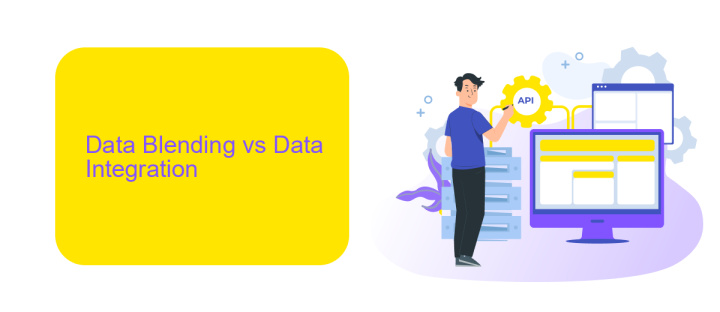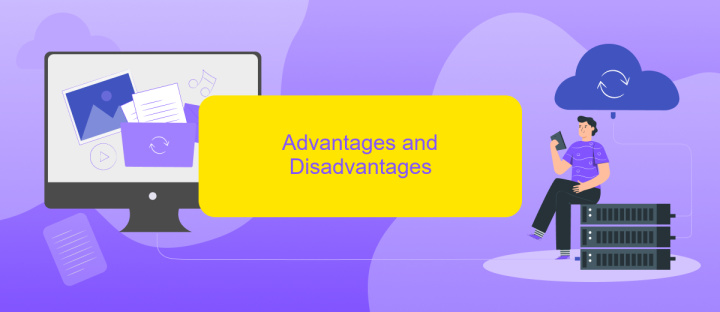Data Blending vs Data Integration
In today's data-driven world, organizations are constantly seeking efficient ways to handle and analyze vast amounts of information. Two popular methods that have emerged are data blending and data integration. While both aim to combine data from different sources, they serve distinct purposes and offer unique benefits. This article explores the differences between data blending and data integration to help you choose the right approach for your needs.
Introduction
In today's data-driven world, organizations are constantly seeking efficient ways to manage and utilize their data. Two prevalent methods that facilitate this process are data blending and data integration. Although these terms are often used interchangeably, they serve distinct purposes and offer unique benefits.
- Data Blending: This method involves combining data from multiple sources into a single dataset, typically for the purpose of analysis. It is often used in business intelligence and analytics to provide a comprehensive view of data.
- Data Integration: This process involves consolidating data from various sources into a unified system. It is essential for creating a cohesive data environment, enabling seamless data flow and accessibility across different platforms.
Understanding the differences between data blending and data integration is crucial for organizations to make informed decisions. Tools like ApiX-Drive facilitate these processes by offering seamless integration solutions, ensuring that data from various sources can be effectively managed and utilized. This helps organizations to streamline their operations and make data-driven decisions more efficiently.
Data Blending vs Data Integration

Data blending and data integration are two distinct processes used to handle and combine data from multiple sources. Data blending involves merging data from different sources into a single dataset for analysis, often used in business intelligence tools. It allows for quick and flexible analysis without the need for extensive data warehousing. Data blending is typically performed at the reporting layer and is ideal for ad hoc analysis where data from various sources need to be quickly combined and visualized.
On the other hand, data integration is a more comprehensive process that involves combining data from different sources into a single, unified view, often within a data warehouse. This process ensures data consistency and quality across the organization. Data integration can be complex and requires robust tools and platforms. Services like ApiX-Drive facilitate this process by automating the integration of various applications and data sources, ensuring seamless data flow and consistency. While data blending is suitable for immediate analysis, data integration is essential for long-term data management and strategic decision-making.
Advantages and Disadvantages

Data blending and data integration are two distinct approaches to managing data from multiple sources. Each method has its own set of advantages and disadvantages that can impact your data strategy.
- Data Blending:
- Advantages: Quick implementation, flexibility in combining data, minimal IT involvement.
- Disadvantages: Limited scalability, potential data inconsistency, manual processes may be required.
- Data Integration:
- Advantages: Enhanced data consistency, scalability, and automation through services like ApiX-Drive.
- Disadvantages: Requires more time and resources for setup, potential complexity in managing integrations.
Choosing between data blending and data integration depends on your specific needs and resources. For quick, flexible data handling, data blending may be suitable. However, for long-term scalability and consistency, data integration with tools like ApiX-Drive offers a more robust solution.
Use Cases

Data blending and data integration are critical for businesses aiming to leverage multiple data sources effectively. Data blending involves combining data from different sources into a single dataset, typically for analytics. On the other hand, data integration focuses on unifying data from various systems, ensuring seamless data flow and consistency across platforms.
Both approaches have their unique use cases. Data blending is often used for quick, on-the-fly analysis, enabling businesses to make swift decisions based on a comprehensive view of data. Data integration, however, is essential for long-term data consistency and reliability, ensuring that all systems within an organization are synchronized and up-to-date.
- Marketing Analytics: Blending data from social media, CRM, and web analytics for comprehensive campaign insights.
- Sales Reporting: Integrating data from various sales platforms to maintain consistent and accurate sales records.
- Customer Support: Combining data from multiple support channels to improve response times and customer satisfaction.
- Operational Efficiency: Integrating data from different operational systems to streamline processes and reduce redundancy.
Services like ApiX-Drive facilitate both data blending and integration by providing tools to connect and synchronize various data sources seamlessly. This ensures businesses can harness the full potential of their data, driving informed decision-making and operational efficiency.


Conclusion
In conclusion, both data blending and data integration play crucial roles in modern data management strategies. Data blending allows for quick and flexible analysis by combining data from various sources on-the-fly, making it ideal for exploratory data analysis and rapid insights. On the other hand, data integration provides a more permanent and structured approach, ensuring data consistency and reliability across the organization. Each method has its unique advantages and can be chosen based on specific business needs and objectives.
For businesses looking to streamline their data integration processes, services like ApiX-Drive offer a valuable solution. ApiX-Drive enables seamless automation and integration of various data sources without the need for extensive technical expertise. This makes it easier for organizations to maintain data accuracy and consistency, ultimately supporting better decision-making and operational efficiency. By leveraging the strengths of both data blending and data integration, companies can achieve a more comprehensive and effective data strategy.
FAQ
What is the difference between Data Blending and Data Integration?
When should I use Data Blending instead of Data Integration?
Can Data Blending be automated?
What are some common challenges in Data Integration?
Are there tools available to simplify Data Integration?
Strive to take your business to the next level, achieve your goals faster and more efficiently? Apix-Drive is your reliable assistant for these tasks. An online service and application connector will help you automate key business processes and get rid of the routine. You and your employees will free up time for important core tasks. Try Apix-Drive features for free to see the effectiveness of the online connector for yourself.

